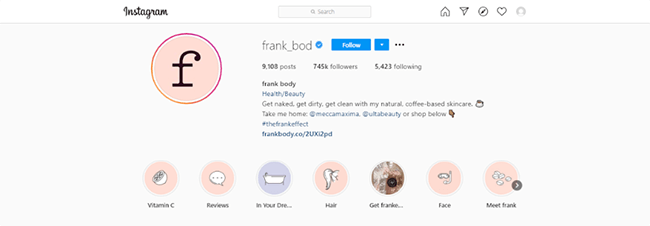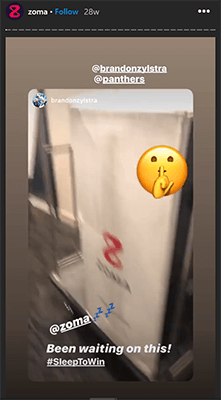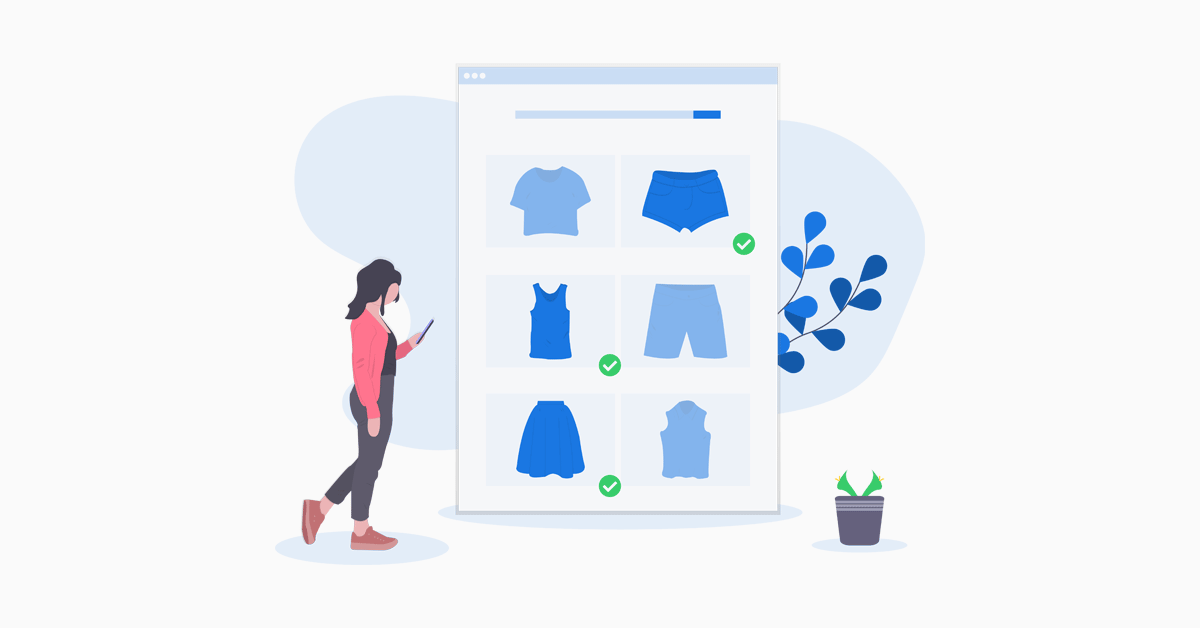6 Instagram Strategies To Grow Your E-Commerce Business
Instagram offers vast opportunities to businesses around the world — especially for e-commerce.
Justin Kan, the CEO of Atrium, says that:
Instagram advertising (both native and through influencers) is going to be the biggest marketing channel for the foreseeable future.
What’s more, data studies say that more than 1 billion users are checking Instagram every single month. And adding the fact that 81% of these people use Instagram for product research, Instagram becomes impossible to ignore.
In this post, you will learn 6 Instagram strategies that will help you grow your e-commerce business.
Let’s dive in.
What you need to check before following an Instagram strategy
Now that Instagram checkout is live, the compatibility that Instagram has with e-commerce businesses is far more obvious.
But before expecting to get instant results from your Instagram efforts, you need to understand that none of these strategies will work if you’re missing the essentials.
So if you want to take Instagram seriously, here’s what you need to check before putting any strategy into practice:
- A working e-commerce website. Yes, don’t expect to live entirely from a platform that’s not under your control. If your website feels clunky and off-brand, it doesn’t matter how solid your marketing efforts are, it will fail to convert your visitors into customers.
- Consistent branding. Building a brand is becoming more and more popular. If your brand isn’t solid enough to show consistency across different platforms, it will confuse your audience and give you negative results.
- An optimized Instagram profile. This one may sound obvious, but if your profile isn’t showing your best picture, it won’t do its job (especially for strategy #4.)
- Know Instagram content standards. Instagram is a visual platform, so posting low-quality content here is a sin. Your images should be high-quality, bright, and pleasant to the eye so it can attract potential customers. Set your visual standards high.
- Get the right tools. You just can’t handle everything with only one account and one PC. Get proper tools and prepare to automate most of your Instagram marketing.
- Have an audience. Having an audience will give you some advantage. But If you don’t have one, you can just start building one from scratch. However, consider that it will take you more time to get some traction.
Essentially, you need to make sure that your business is solid in order to expect any strategy to work, that’s a fact.
And now that you have everything you need to make Instagram work for your business. Let’s get started with the strategies:
Strategy #1. Tag your products
Tagging is a great way to let your audience learn about your product, get into your shop, and then buy.
Here’s how you can tag products:
- First, open a Facebook business account and set up a shop section. Here, you have to place your products.
- Go to settings and connect with your Instagram account with Facebook.
- Wait a few days until you get the notification. And once you get it, both accounts will be successfully linked.
- Now, every time you post an image, you’ll have the option to tag any product you have on your Facebook shop. This option will allow your viewers to get into your website and buy.
Note, Instagram allows you to tag up to 5 products per post and 20 per story carousel.
So it’s pretty obvious, don’t be spammy, that’s what Instagram is trying to prevent on their platform.
The key is to keep building engagement organically with non-monetized content, and only monetize when appropriate.
Strategy #2. Use hashtags like a pro
Hashtags are Instagram’s main currency. In fact, hashtags generate more engagement in your post. So if you’re not into hashtags, you’re missing out.
The rules here are simple. You’re allowed to add up to 30 hashtags per post. And there are many types of hashtags you can use:
- General: These hashtags refer to trivial things that your audience are sharing. They’re worth including when relevant.
- Branded: These are customized hashtags used to identify a specific brand. They’re useful to pull your audience together and improve engagement.
- Niche-specific: Niche-specific hashtags are great to spot great markets and reach the right people. You’ll want to use them as a way to attract a specific segment of your target audience and engage them right away.
- Seasonal: Every hashtag related to any season, news, celebration, or any temporary event is considered seasonal. They have a broader reach, but for limited time.
- Contests: These hashtags are used to identify events (see strategy #5.) They’re great to generate some buzz within your audience and get some quick results.
To get the most out of this, you need to do some hashtag research and build a mix of hashtags you want to target.
However, don’t use the same mix of hashtags for every post. Remember to stay relevant according to the hashtag’s “intent” while keeping user experience in mind.
Strategy #3. Tell your stories
Instagram Stories are essential to generate engagement. In fact, 62% of Instagrammers become more interested in brands that regularly post products in their stories.
This is why stories are so popular and powerful.
If you want to get started on this. Here are some Instagram stories tips you can approach:
- Make use of user-generated content. When your customers are bragging about your product in their timeline, it’s often a good idea to repost that photo in your account, without shame! Believe me, customers feel good when they get the attention of your brand, and they’ll probably talk about it with her/his friends (the power of word-of-mouth.)
- Promoting an event you’re hosting or attending. If you’re hosting an event or contest, don’t limit yourself to publish a regular post, use stories as well if you want to get maximum reach (see strategy #5.) Also, if you’re attending a popular event in your niche, it is worth posting a story about it.
- Post more videos. Videos are the standard now. So, learning to create videos will give you an advantage, and not only for Instagram but for every social platform you’re using.
- Livestream. Yes, you can go live with Instagram stories. And this is a huge opportunity to engage your audience with live content. All you have to do is to announce it, set the date, and stream.
- Add product tags and hashtags. If you’re posting something related to your product, don’t be afraid to add the respective tag so your viewers can learn more from you — the same with hashtags.
- Insert highlights. See those circles below active Instagram profiles? Those are highlights, and they’re great to put your best content in a place of easy access for your audience.
Strategy #4. Put a link in your bio
In the whole platform, your profile’s bio is the only place you can insert a link. And one of the two ways to drive traffic to your website (the other way is tagging.)
So you want to take some advantage of this and include the most relevant link here. And then, try to reference such links in your post descriptions.
As a note, consider that the big majority of Instagram users navigate on their phone. So make sure to optimize your website for mobile and tablet.
Also, you can insert a relevant call to action in your bio as an alternative (like sending a direct message, contact, follow, check your content, etc..)
Strategy #5. Run contests
Did you know that 41% of Instagram users have followed a brand just to participate in giveaways?
Contests are stellar to generate engagement, quick sales, and new followers.
You just have to pick something you can afford to give away (as long as it’s relevant to your audience) and you’re set to get started.
The procedure is simple:
- Post a compelling photo and announce the giveaway.
- Explain the rules in the description of the post.
- Ask participants to like, follow, and repost in their timeline with a specific hashtag. You can use chatbots to automate parts of this process. Our post on chatbot stats explains how effective they can be.
- When announcing the winner, you can tag, post a story, stream, or anything that may generate some buzz within your audience base. You can also give a discount coupon to all the participants if you can, so they’ll feel compensated as well.
- You can run Facebook, Instagram or any social platform for giveaways or contests.
And that’s it. Easy traffic.
Strategy #6. Influencer marketing
Influencer marketing is becoming popular, fast.
And it’s no surprise, massive results have been obtained with influencer marketing. You can ask Madewell about its “Instagram flash mob” campaign. Which — to save you the trouble of contacting their marketing team — resulted in more than 1,600 posts to their own hashtag, more than 160k likes in one day, and 8,5 million impressions in total.
That’s crazy good.
Also, for mattress brand Zoma, influencer partnerships have helped to put it on the map. Endorsements from pro athletes in the NBA, NFL, MLB, and more can be seen on their Instagram Highlights.
When googling for pricing, you’ll often hear that sponsored posts can cost around $20. But that really depends on the kind of influencer you work with, as you can see from this report.
To get started, you can use an app like BrandSnob to search for influencers in your niche and negotiate right away.
Again, there’re tons of opportunities here. Be sure to learn more about influencer marketing and keep on top of emerging trends so you stay ahead of your competitors.
Engagement is key
It’s no secret that you need to keep posting engaging content for your audience, constantly. So you can start growing your business.
Without mentioning the amount of active time you need to invest here, such as commenting and following your prospects, creating regular content, and connecting with other accounts.
This is not a sexy strategy, but it’s necessary to get real engagement with real results.
But in the end, you won’t regret it.
So go ahead and take action.
Further reading:







